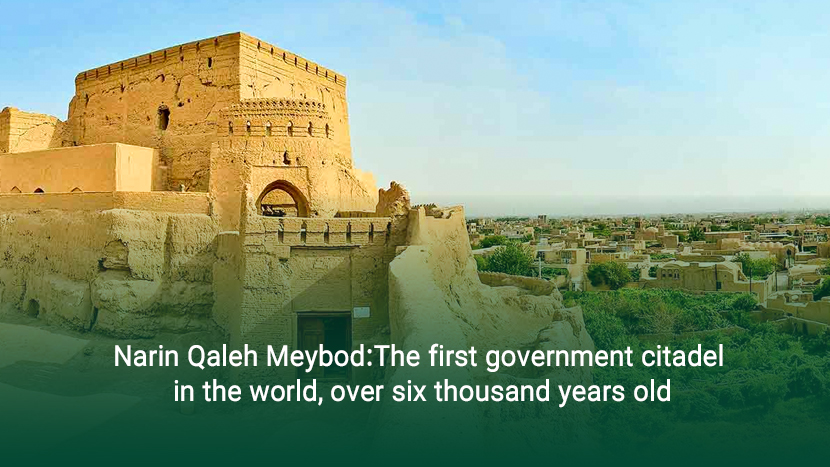
Narin Qaleh Meybod Castle
Dating back to about 4000 BC, Narin Qaleh Meybod is the oldest government citadel in the world. Narin Qaleh is the largest brick and mud building left over from ancient times in the world and, as one of the outstanding examples of Iranian brick architecture, it has extraordinary value not only historically but also artistically. This spectacular castle represents the rich Iranian culture and art in different historical periods, and its unique features have made it a lasting work.
Unique architecture
Narin Qaleh is designed in a way that is in harmony with its natural environment. Using a natural hill as a foundation for construction has contributed to its strength and stability.
In this castle, different points are connected to each other using internal and external stairs, which helps in easy access and optimal use of spaces.
These traditional materials were used as a symbol of construction techniques in ancient Iran. Brick and mud were a suitable choice for the construction of such structures due to their availability and thermal insulation capabilities.
The art of bricklaying and mud-making is clearly evident in this castle and reflects the artistic skills of the architects and builders of that time.
Decorations and motifs
Decorative motifs
In parts of the walls and facade of the castle, geometric and plant motifs and patterns can be seen, which are a symbol of Islamic and Iranian art.
These motifs not only create visual beauty but also carry cultural and social messages.
The interior spaces of the castle are designed with high walls and arched ceilings, which indicate attention to aesthetics and functionality in architecture.
The use of natural light by creating small windows and strategic openings makes the interior more pleasant and provides proper ventilation.
Defense systems
Thick walls and watchtowers were used in the design of the castle to ensure the security of the residents. These defensive features indicate awareness of security needs in ancient times.
The unique design of this castle allows for monitoring the surroundings and allows the residents to easily identify threats.
Cultural and social heritage
Initially, this castle was designed as a military and defense center and as a place for living and social gathering. Various ceremonies, celebrations and gatherings were held in this place, which indicates the close connection of the residents with this space and is a symbol of the social and cultural life of the people of that time.
During the Sasanian era, the existence of fortified castles and fortresses was essential to counter various attacks as well as to control trade routes.
After the advent of Islam, Narin Qala continued to be used by local rulers. During this period, changes and renovations were made to its structure that helped improve the facilities and security of the castle.
Preservation and Reconstruction
Traveling to historical cities is very rewarding and gives you the opportunity to discover the secrets of the past. Meybod and other ancient cities are areas full of historical wonders that will be attractive and exciting for any tourist. So be sure to put this region of Iran on your list of virtual tourism destinations (live and direct broadcast) and travel there with a relaxed mind and riding the waves.
If you have personally traveled to this castle, please write your experiences and memories for us and other readers so that they can use these experiences to plan a dreamy and memorable trip.
Traveling to historical cities is very rewarding and gives you the opportunity to discover the secrets of the past. Meybod and other ancient cities are areas full of historical wonders that will be attractive and exciting for any tourist. So be sure to put this region of Iran on your list of virtual tourism destinations (live and direct broadcast) and travel there with a relaxed mind and riding the waves.If you have personally traveled to this castle, please write your experiences and memories for us and other readers so that they can use these experiences to plan a dreamy and memorable trip.
By using form u agree with the message sorage, you can contact us directly now